Backing up your emails is especially important for Mac users, who rely on Apple's Mail app to manage their emails. This article will demonstrate How To Backup Emails on Mac to ensure you always keep important data. We'll cover different methods of backing up your Mail data, including using Time Machine and email clients such as Outlook, Thunderbird & Mac Mail. Let’s get started!
Join us to celebrate World Backup Day, Take a moment to back up your data and prevent data loss!
In this article
Prerequisites
Before you start backing up your mails on Mac, there are a few prerequisites you need to take care of if you want to back up your Gmail or Yahoo mail on Mac.
1. Managing POP Access for Gmail
Configuring POP (Post Office Protocol) access in Gmail allows you to save a copy of your messages locally and access them through any email client. This protocol, by default, deletes the original one from the webmail inbox after downloading it. Conversely, Gmail allows you to choose whether to delete, archive, keep, or mark them as read.
To facilitate POP access in Gmail, perform the following steps:
- Step 1. Sign into your Gmail account and explore to Google Account. Then, click Security > Less secure app access. Toggle the Allow less secure apps option on. It is required so that Gmail does not reject a server connection established by the remote client.
- Step 2. Select Settings > Forwarding and POP/IMAP. Next, enable POP for all mail under the POP download Furthermore, the second option specifies what action should be taken with the original messages once a copy is saved. In this case, we'll keep them.
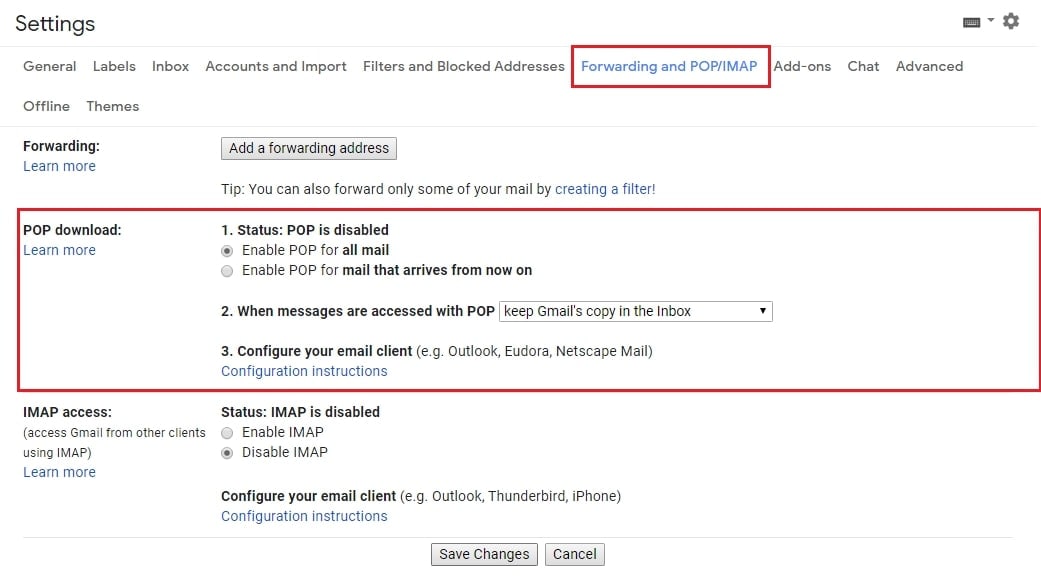
- Step 3. Click Configuration Instructions below the Configure your email client option to access Gmail server settings. Scroll down to find the details.
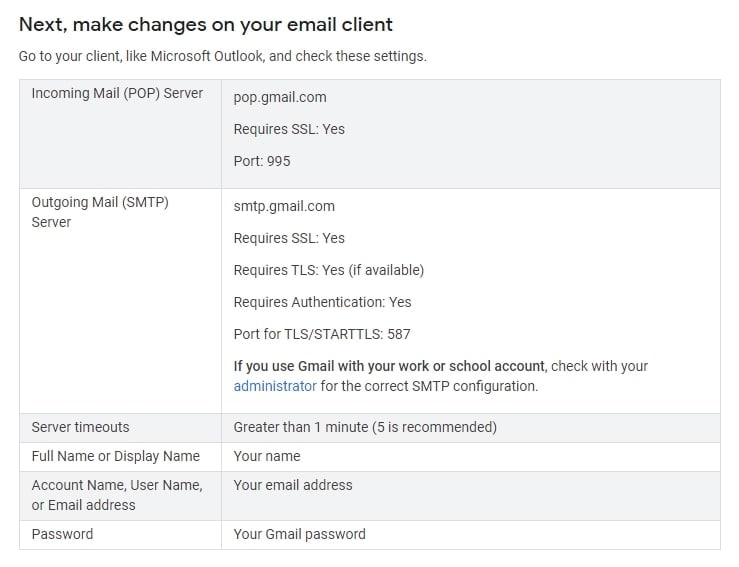
2. Configuring IMAP Access for Yahoo Mail
IMAP (Internet Message Access Protocol) synchronizes messages with the server to be accessed from any device. To enable IMAP access for Yahoo Mail, change the security settings.
- Step 1. Navigate to Account Info after signing into your Yahoo Mail account. Then, go to Account Security and enable the option Allow apps that use less secure sign in.

- Step 2. Locate the IMAP server settings in the Yahoo Help Center.
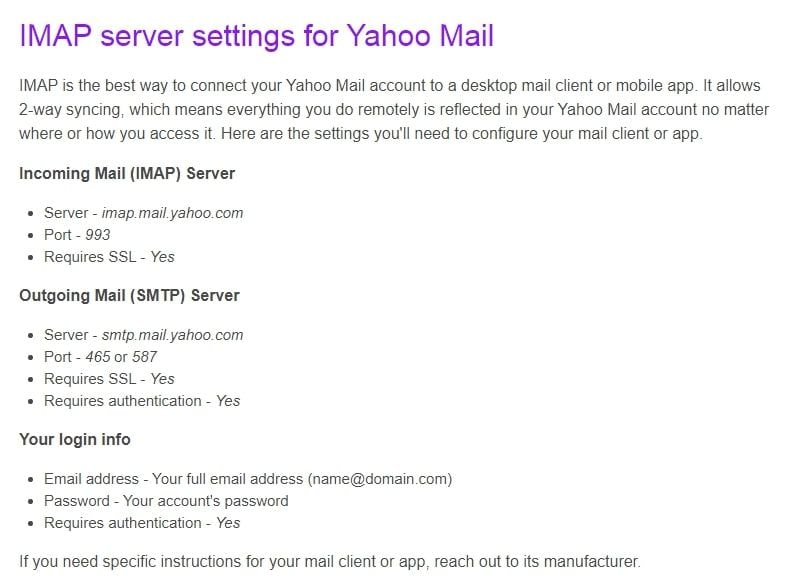
2 Workable Methods for Backing up Emails on Mac
Whether you prefer a simple solution or a more advanced approach, these methods provide various ways. There are several options to backup mail on Mac to protect your data from loss or damage. See the top 2 methods available.
Method 1: Back Up Emails on Mac Using Email Clients
Once you've obtained your email server information by accomplishing the prerequisites, you'll need to set up your account with the email client to back up your messages. The steps to do it using three different email clients are provided below.
Microsoft Outlook
Outlook is a popular email client used on Mac to manage your email accounts. It can help you manage your email, calendar, and tasks all in one place. In addition, Outlook also allows you to back up your emails to prevent data loss and ensure that you have access to your important emails, even if something goes wrong.
To easily reduce the size of your inbox, manually archive email messages, contacts, and other items to an Outlook for Mac Data File (.olm). An.olm file can be saved to any location on your Mac or to a different machine for safekeeping.
Here are the steps to back up your emails using Outlook on Mac:
- Step 1. Select Export from the Tools menu.

Note: Need help finding the Export button? Check that you have the most recent version of Outlook. Click Check for Updates from the Outlook Help menu. If you've installed all Outlook updates, look for Export on the Outlook File menu.
- Step 2. Check the items you want to export in the Export to Archive File (.olm) box, then click Continue.
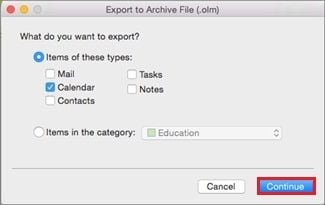
- Step 3. Choose the Downloads folder under Favorites in the Save As box, and click Save.
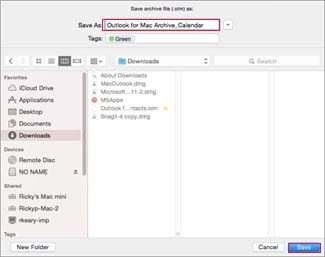
- Step 4. You will be notified once your data has been exported. Select Finish.
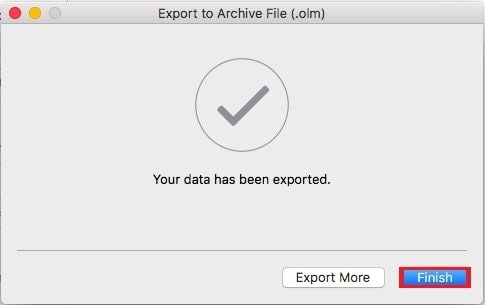
Thunderbird
Thunderbird is an open-source email application that can be used on Mac to manage your email accounts. It is a reliable tool that can help you manage your emails, contacts, and calendars all in one place.
To back up your emails using Thunderbird on Mac, comply with the instructions below:
- Step 1. While on your Mac's home screen, select Go. Hold the Option Then click on Library.
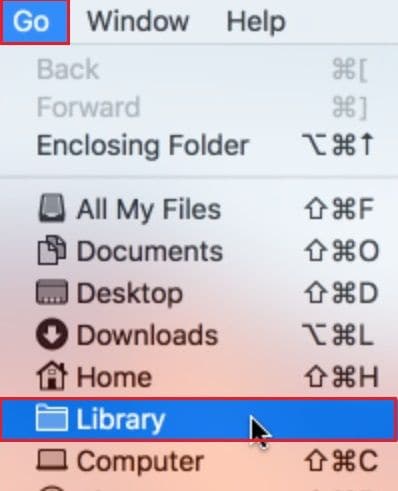
- Step 2. Navigate to Thunderbird > You should see a list of profiles currently on your device.
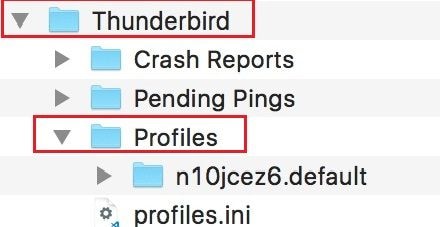
- Step 3. Copy the desired profile(s) and paste/save them in a desired location.
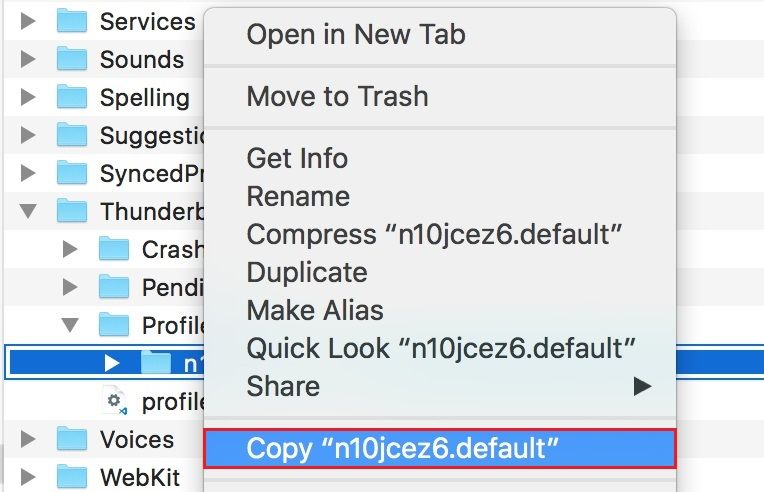
- Step 4. To restore, drag & drop your backup profile(s) to Thunderbird >Profiles.
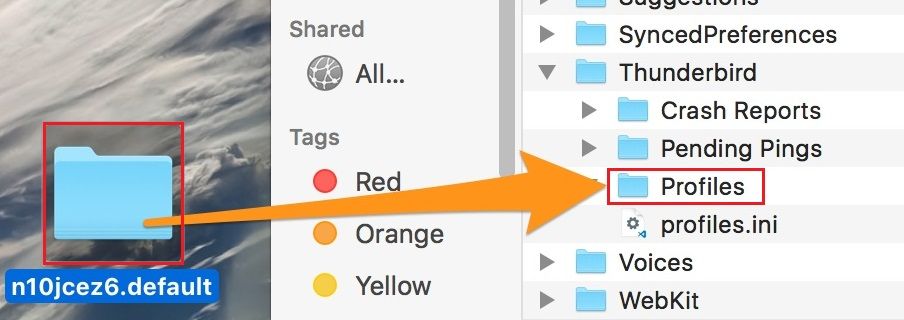
Mac Mail
Mac Mail is the built-in email client for macOS that can be used on Mac to manage your email accounts. Here are the steps to back up your emails using Apple Mac Mail on Mac:
- Step 1. Open Mac Mail and select the account that you want to back up. Go to the Mailbox menu and select Export Mailbox.
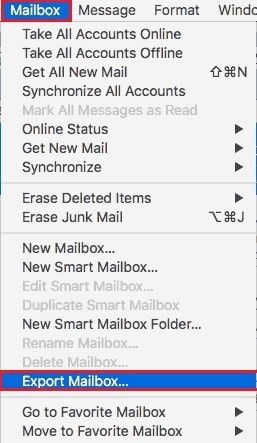
- Step 2. Please choose the location where you want to save the backup file and give it a name. Click Save to start the backup process.
Mac Mail will create a backup file in the format of an MBOX file, which contains all the selected items from your email account. You can save this file to an external hard drive or cloud storage for safekeeping. If you ever need to restore your emails, open Mac Mail, go to the File menu, select Import Mailboxes, and choose the MBOX file to restore your emails.
Note: Mac Mail also provides an option to create a backup of your entire Mail library, which includes all your email accounts, settings, and messages. To create a library backup, go to the Mailbox menu, select New Mailbox, choose the location where you want to save the backup file and give it a name. Drag all your email accounts and folders into the new mailbox, and then copy the new mailbox to your backup location.
Method 2: Back Up Emails on Mac Using Time Machine
Time Machine is the built-in backup feature for macOS that can be used on Mac to back up your entire system, including your email client and data. It is a tool that can assist you in protecting your data against accidental deletion, system crashes, or hardware failures.
The procedures to back up your emails on a Mac using Time Machine are as follows:
- Step 1. Connect the hard drive to your Mac that you want to use for Time Machine backups. Go to the Apple menu and select System Preferences.
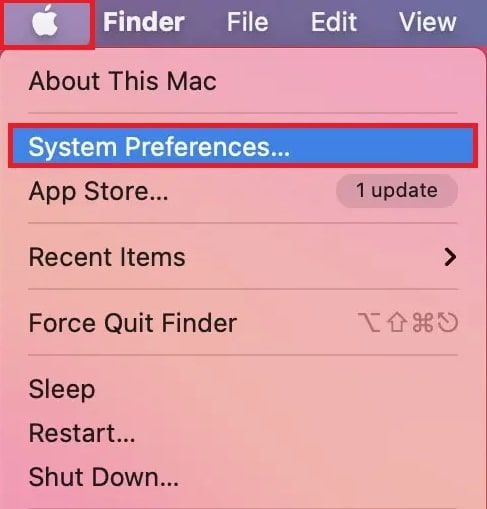
- Step 2. Click Time Machine and turn on Time Machine if it is not already on.
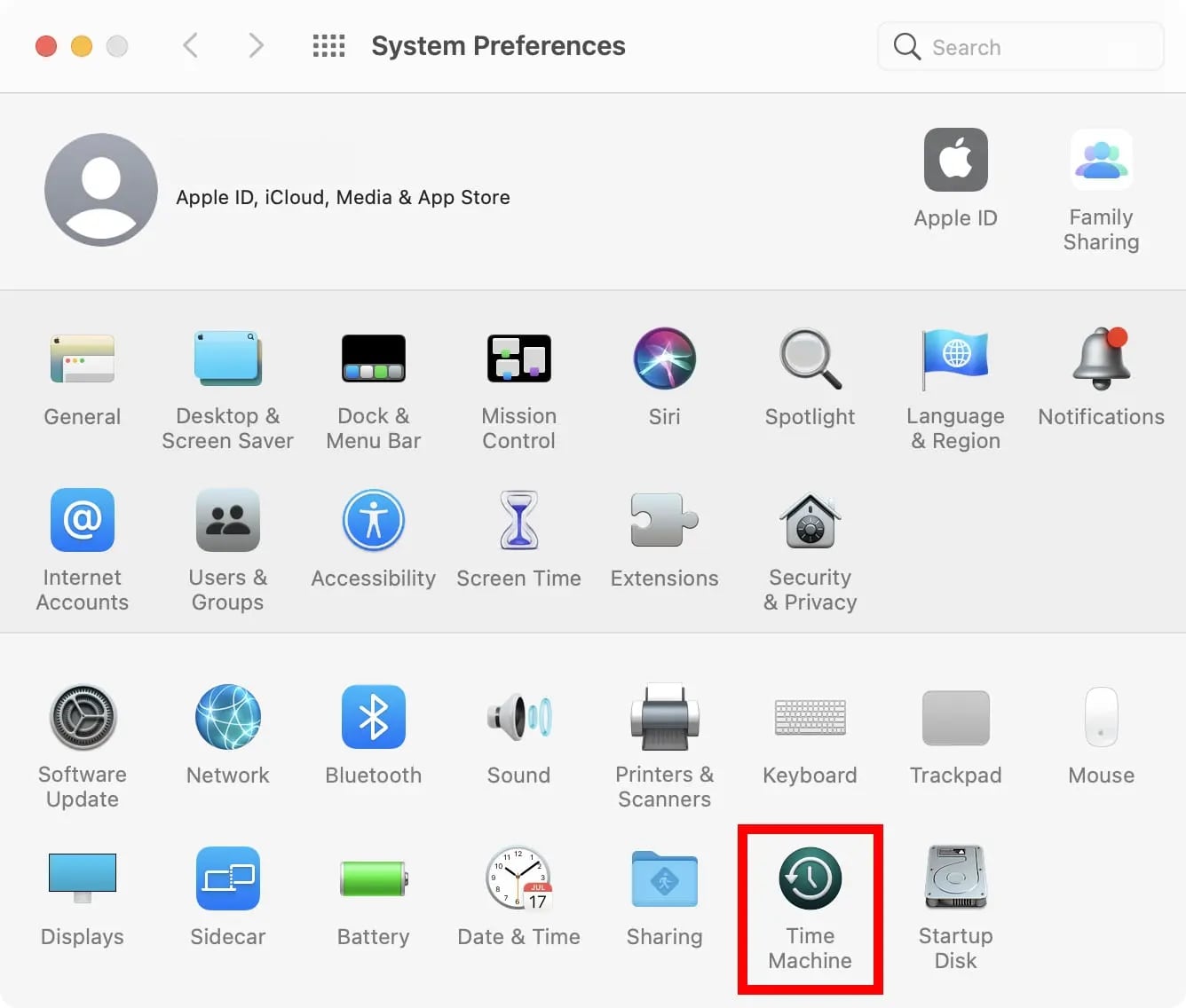
- Step 3. Click the Select Backup Disk button and choose the external hard drive you connected. Then, click Options and select the email client and data you want to back up, such as Mac Mail or Outlook. Lastly, press Save to apply the changes.
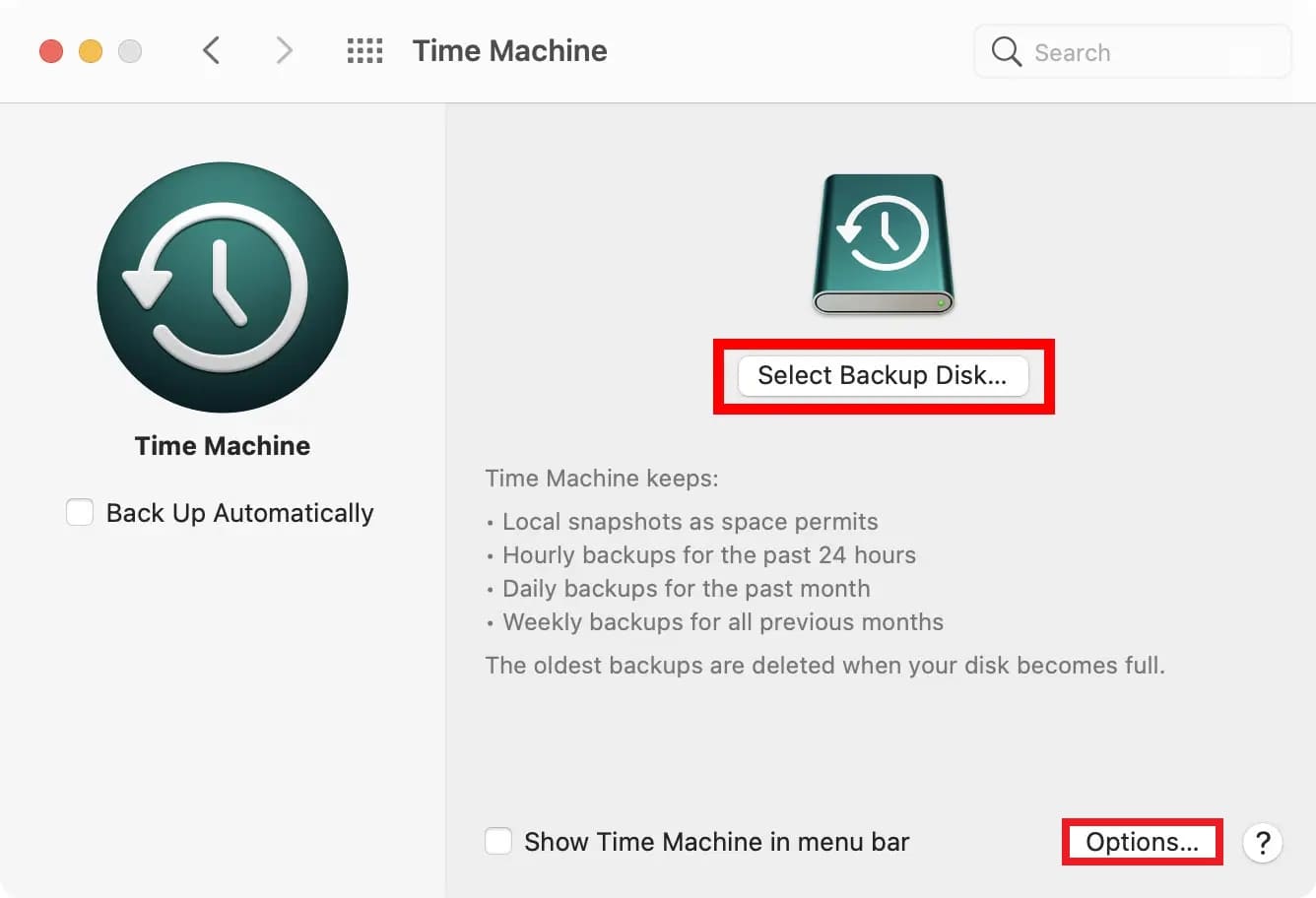
Time Machine will now start backing up your email client and data regularly. You can access your backups by clicking the Time Machine icon in the menu bar or opening the Time Machine app from the Applications folder.
Note:
- To restore your emails, enter Time Machine and browse the backups to find the email client or data you want to restore. Once you have found the backup, please select it and click Restore to restore your emails.
- Time Machine backups can take up a lot of space on your external hard drive, so ensure you have enough space for your backups. Additionally, it is recommended to have a backup strategy that includes both Time Machine and offsite backups to protect your data against all types of data loss scenarios.
Aside from the said methods, you can back up Mac emails using third-party tools. Many email backup software is available, you can select the appropriate one based on your requirements.
Backing up emails to an external storage device is another simple and effective solution.
Tips for Efficient Email Backup on Mac
The tips for a smooth backup process are provided below:
A. Organizing Email Folders and Labels
When it comes to efficient email backup on Mac, organizing email folders and labels can be extremely helpful. By keeping your emails well-organized and categorized, you can easily identify which emails need to be backed up and when. Plus, this can save you time when searching for specific emails during the backup process.
You can do this by:
- Creating folders and subfolders for different categories of emails such as work, personal, or specific projects.
- Using labels or tags to easily identify emails that need to be backed up, such as those with important attachments or those from specific senders.
- Regularly cleaning out your inbox and archiving or deleting unnecessary emails.
B. Maintaining Backup Frequency
Regularly backing up your emails on Mac ensures you don't lose important information. Maintaining a regular backup schedule can also help you stay organized and avoid the stress of trying to back up many emails simultaneously.
You can maintain backup frequency through the following:
- Set up automated backup schedules to ensure your emails are backed up regularly.
- Making it a habit to back up your emails at the end of each day or week.
- Prioritizing the backup of important emails and attachments, such as those related to work or projects.
- Storing backups in multiple locations ensures they are safe in case of hardware failure or other issues.
Summing Up
The article outlines two effective methods for backing up emails on Mac: utilizing Time Machine and email clients such as Outlook, Thunderbird, and Mac Mail. It also offers valuable tips for optimizing email backup efficiency, including organizing email folders and labels and maintaining a consistent backup schedule. By implementing these tips, users can ensure that their important email data is securely stored and readily accessible for future use.

 ChatGPT
ChatGPT
 Perplexity
Perplexity
 Google AI Mode
Google AI Mode
 Grok
Grok























